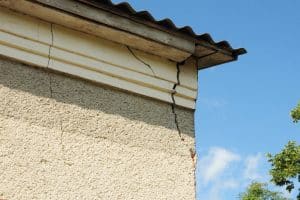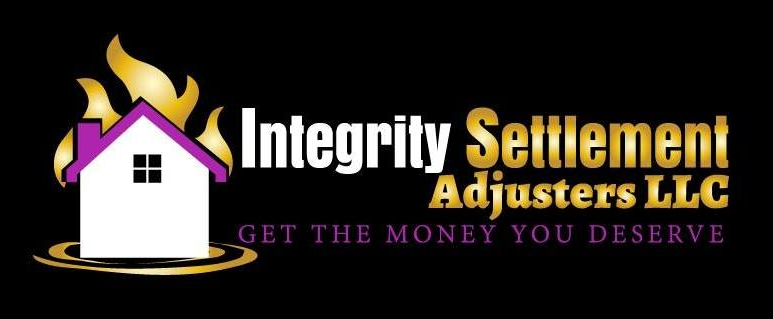
Understanding Structural Damage
Structural damage refers to any significant harm that compromises the core integrity and stability of a building or structure. This type of damage goes beyond mere cosmetic issues, as it directly affects the load-bearing components that are essential for the structure’s overall safety and functionality.
Key Components of Structural Damage
When assessing structural damage, experts primarily focus on the four pillars that form the foundation of a building: the foundation, floor, walls, and roof. Damage to any of these critical elements can be considered structural, including:
-
- Foundation Issues: Cracks, settling, or upheaval in the foundation can undermine the entire structure’s stability.
- Wall Damage: Bowing, cracking, or shifting in load-bearing walls can compromise the building’s structural integrity.
- Roof Damage: Significant damage to the roof, such as collapsed or missing sections, can jeopardize the structure’s ability to withstand environmental stresses.
- Floor Damage: Sagging, slanting, or severe cracks in the flooring may indicate underlying structural problems.
Causes of Structural Damage
Structural damage can arise from a variety of sources, each with its own unique legal and insurance implications. Some of the most common causes include:
-
- Natural Disasters: Severe weather events, such as hurricanes, tornadoes, floods, and earthquakes, can inflict catastrophic damage to a building’s structure.
- Environmental Factors: Prolonged exposure to harsh climates, moisture intrusion, and ground movements (e.g., soil settlement, subsidence) can gradually weaken a structure over time.
- Construction Defects: Poorly executed construction practices, the use of substandard materials, or design flaws can lead to structural problems, even in newly built properties.
- Accidental Damage: Unexpected events, such as vehicle collisions, explosions, or fires, can instantly compromise a building’s structural integrity.
Understanding the root cause of structural damage is crucial, as it determines the party responsible and the potential coverage under an insurance policy.
Homeowners Insurance and Structural Damage
When it comes to protecting your property, homeowners insurance is often the first line of defense. However, the coverage for structural damage can vary significantly between policies, and it’s essential to know exactly what your policy covers.
Dwelling Coverage
The part of your homeowners insurance policy that specifically addresses structural damage is typically referred to as “dwelling coverage.” This coverage is designed to protect the physical structure of your home, including the foundation, walls, roof, and other load-bearing components.
Covered Perils
Homeowners insurance policies generally cover structural damage caused by specific “covered perils,” such as:
-
- Fire
- Smoke
- Lightning
- Windstorms (including hurricanes)
- Hail
- Vandalism
- Accidental water damage (e.g., burst pipes)
It’s important to note that not all types of structural damage are automatically covered under a standard homeowners policy. Exclusions often include damage caused by floods, earthquakes, and general wear and tear.
Supplementary Coverage
To ensure comprehensive protection for your property, you may need to consider supplementary insurance policies or riders, such as:
-
- Flood Insurance: Covers damage caused by flooding, which is typically excluded from standard homeowners policies.
- Earthquake Insurance: Provides coverage for structural damage resulting from seismic activity.
- Sinkhole Insurance: Protects against damage caused by ground movements and soil instability.
Carefully reviewing your homeowners insurance policy and understanding its limitations is crucial in determining whether you need additional coverage for your specific property and location.
Navigating the Insurance Claim Process
When faced with structural damage, the insurance claim process can be complex and overwhelming. However, by following a systematic approach and understanding your rights, you can increase your chances of a successful claim and secure the necessary funds to restore your property.
Documenting the Damage
The first step in the insurance claim process is to thoroughly document the structural damage. This includes:
-
- Taking detailed photographs and videos of the affected areas
- Keeping meticulous records of the damage, including dates, locations, and a description of the issues
- Obtaining professional assessments and cost estimates from licensed contractors or structural engineers
Comprehensive documentation is essential to support your claim and demonstrate the extent of the damage to your insurance provider.
Notifying the Insurance Company
Once you have documented the structural damage, promptly notify your insurance company. Be prepared to provide them with the necessary information, such as the date and cause of the incident, as well as the details you have gathered during the documentation process.
Cooperating with the Insurance Adjuster
Your insurance company will typically send an adjuster to assess the damage and evaluate the claim. Cooperate fully with the adjuster, providing them with all the relevant documentation and granting them access to the affected areas of your property.
Negotiating the Claim Settlement
After the adjuster’s assessment, your insurance company will provide you with an initial offer for the claim settlement. It’s important to carefully review this offer and compare it to the cost estimates you have obtained from professionals. If the offer is insufficient, be prepared to negotiate and provide additional evidence to support your claim.
Seeking Professional Assistance
In some cases, the insurance company may deny your claim or offer a settlement that you find unsatisfactory. In such situations, it’s advisable to seek the help of a public adjuster or an attorney who specializes in insurance claims. These professionals can advocate on your behalf, negotiate with the insurance company, and ensure you receive the fair compensation you are entitled to.
Preventing Structural Damage
While addressing structural damage is crucial, it’s equally important to take proactive steps to prevent such issues from occurring in the first place. By implementing a comprehensive maintenance and prevention strategy, you can safeguard your property and minimize the risk of costly repairs and insurance claims.
Regular Inspections and Maintenance
Regularly inspecting your property and addressing minor issues before they escalate can go a long way in preventing structural damage. This includes:
-
- Conducting seasonal inspections of the foundation, walls, roof, and other critical components
- Addressing any cracks, leaks, or signs of wear and tear in a timely manner
- Ensuring proper maintenance of plumbing, drainage systems, and landscaping to prevent water-related damage
Environmental Protection
Protecting your property from environmental factors can also help mitigate the risk of structural damage. Consider the following measures:
-
- Ensuring proper drainage and grading around the foundation to prevent water accumulation
- Trimming trees and vegetation to maintain a safe distance from the building
- Reinforcing the building’s envelope (windows, doors, and roof) to withstand severe weather conditions
Building Code Compliance
When constructing or renovating a property, it’s crucial to ensure that the work is carried out in compliance with local building codes and regulations. This helps to ensure the structural integrity of the building and reduces the likelihood of future problems.
Navigating Insurance Disputes
Despite your best efforts, there may be instances where your insurance provider denies your claim or offers a settlement that you find unacceptable. In such cases, it’s essential to understand your rights and be prepared to navigate the dispute resolution process.
Reasons for Claim Denial
Insurance companies may deny structural damage claims for various reasons, including:
-
- Determining that the damage was caused by a non-covered peril (e.g., flood, earthquake, or lack of maintenance)
- Claiming that the damage was pre-existing or a result of gradual deterioration
- Disputing the extent or cost of the necessary repairs
Challenging Claim Denials
If your claim is denied, you have the right to appeal the decision. This may involve:
-
- Providing additional documentation and evidence to support your claim
- Requesting a re-inspection or a second opinion from a professional
- Escalating the dispute to a higher level within the insurance company
- Seeking the assistance of a public adjuster or attorney who specializes in insurance claims
Mediation and Arbitration
If you are unable to resolve the dispute through direct negotiations with the insurance company, you may need to explore alternative dispute resolution methods, such as mediation or arbitration. These processes can help facilitate a fair and binding resolution without the need for lengthy and costly litigation.
Seeking Professional Assistance
Navigating the complexities of structural damage and insurance claims can be a daunting task, especially for property owners without prior experience. Seeking the guidance of professionals can be invaluable in ensuring a successful outcome.
Public Adjusters
Public adjusters are independent insurance claims experts who advocate on behalf of policyholders. They can assist you in:
-
- Thoroughly documenting the structural damage
- Preparing and submitting a comprehensive insurance claim
- Negotiating with the insurance company for a fair settlement
- Navigating the dispute resolution process, if necessary
Attorneys Specializing in Insurance Claims
If your insurance dispute escalates or you encounter significant challenges, consulting an attorney who specializes in insurance claims can be beneficial. These legal professionals can:
-
- Provide guidance on your rights and obligations under the insurance policy
- Represent you in negotiations with the insurance company
- Initiate legal action, if required, to ensure you receive the compensation you are entitled to
We Can Help With Structural Damage Insurance Claims
When it comes to structural damage insurance claims, public adjusters are instrumental in guiding you through the complex and often overwhelming process.
> Learn More
Structural damage to your property can be a daunting and stressful experience, but with the right knowledge and resources, you can navigate the insurance claim process successfully. By understanding the types of structural damage, the coverage provided by your homeowners insurance policy, and the steps to take when filing a claim, you can increase your chances of securing the necessary funds to restore your property to its pre-damage condition.
Contact Us (954-292-4426) For a Free Consultation!
—
 About Integrity Settlement Adjusters
About Integrity Settlement Adjusters
Integrity Settlement Adjusters is a leading public adjusting firm dedicated to advocating for the rights of property owners in the aftermath of property damage and disasters. With a commitment to honesty, transparency, and professionalism, Integrity Settlement Adjusters assists you in navigating the complex insurance claim process to ensure fair and just compensation for your property damage. We work tirelessly to represent your best interests, offering personalized support and expertise every step of the way. By upholding the highest ethical standards and prioritizing client satisfaction, Integrity Settlement Adjusters has earned a reputation for reliability and integrity within the public adjuster industry.
> Learn More

 About Integrity Settlement Adjusters
About Integrity Settlement Adjusters